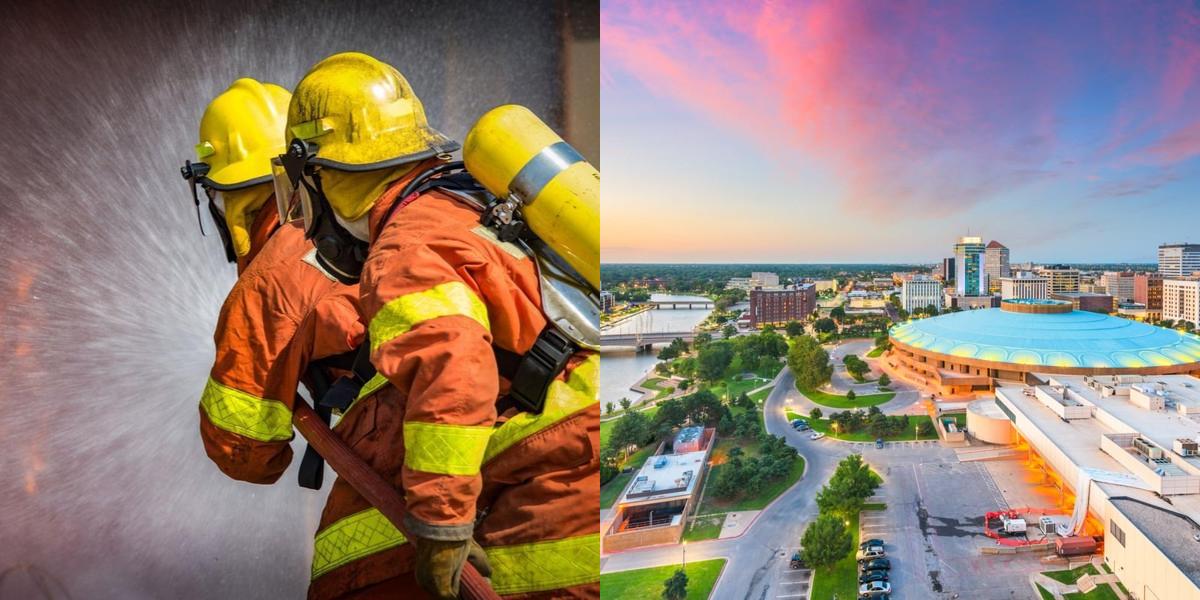How to Become a Firefighter in Kansas (2024)

Becoming a firefighter is a noble and challenging career choice. Firefighters are highly trained professionals who respond to emergencies, such as fires, accidents, and medical incidents, with the primary goal of protecting life and property. Here are the key points you need to know about becoming a firefighter in Kansas.
Key Points
- A firefighter is a professional who responds to emergencies, including fires, accidents, and medical situations, with the goal of protecting lives and property.
- To become a firefighter in Kansas, you must complete a firefighter training program and meet state and departmental requirements, including passing physical and written exams.
- Firefighter training in Kansas typically takes 6 to 12 months to complete, combining both classroom learning and hands-on experience.
- The median annual salary for firefighters in the U.S. is $45,680, though pay varies depending on experience and location.
How to Get a Firefighter Certification?
Becoming a firefighter is a noble and rewarding career choice. If you're passionate about helping others and want to make a difference in your community, pursuing a firefighter certification is the first step towards achieving your goal. Here are the steps you need to follow to obtain your firefighter certification:
1. Research the requirements: The specific requirements for firefighter certification may vary depending on the state or region you're in. It's important to do thorough research to understand the prerequisites and qualifications needed to become a firefighter in your area.
2. Meet the basic qualifications: Generally, you must be at least 18 years old, have a high school diploma or GED, and possess a valid driver's license to be eligible for firefighter certification. Some fire departments may have additional requirements such as physical fitness tests or medical evaluations.
3. Complete a firefighter training program: To become a certified firefighter, you'll need to complete a firefighter training program. These programs are typically offered by community colleges, vocational schools, or fire academies. The curriculum includes both classroom instruction and hands-on training to prepare you for the challenges of firefighting.
4. Gain EMT certification: Many fire departments require firefighters to have Emergency Medical Technician (EMT) certification. EMT training programs teach you how to provide basic medical care to individuals in emergency situations. Earning your EMT certification will enhance your qualifications and increase your chances of being hired as a firefighter.
5. Pass written and physical exams: Firefighter certification often involves written exams to assess your knowledge of firefighting techniques, procedures, and safety protocols. Additionally, you'll be required to pass physical exams to demonstrate your physical fitness and ability to perform the tasks required of a firefighter.
6. Obtain CPR certification: Cardiopulmonary Resuscitation (CPR) certification is another essential requirement for firefighter certification. CPR training equips you with the skills to provide life-saving assistance to individuals experiencing cardiac arrest or other medical emergencies.
7. Apply for certification: Once you have completed the necessary training and obtained the required certifications, you can apply for firefighter certification through your local fire department. The application process typically involves submitting an application form, providing documentation of your qualifications, and undergoing an interview.
8. Complete probationary period: If your application is successful and you're offered a position as a firefighter, you'll typically enter a probationary period. During this time, you'll undergo on-the-job training and evaluation to ensure you can effectively perform the duties of a firefighter.
Landing a Job as a Firefighter
Getting a job as a firefighter is a competitive process, but with the right preparation and determination, you can increase your chances of success. Here are the steps to follow to secure a job as a firefighter:
1. Create a Strong Resume:
- Highlight your certifications, training, and relevant experience.
- Showcase your teamwork and problem-solving skills.
2. Research Fire Departments:
- Understand each department’s unique requirements and hiring process.
3. Network:
- Attend local events or volunteer with fire departments to make connections.
4. Prepare for Interviews and Tests:
- Practice answering questions about your motivations, teamwork, and emergency response scenarios.
- Train for the physical agility test to prove your fitness.
Career Paths and Opportunities after Becoming a Firefighter
Becoming a firefighter is just the beginning. Here are some career paths you can pursue within the firefighting profession:
- Fire Captain: Lead a team during emergencies and manage station operations.
- Fire Investigator: Determine the cause and origin of fires.
- Fire Inspector: Ensure buildings comply with fire codes and safety standards.
- Firefighter/EMT: Combine firefighting with emergency medical care for a dual-purpose role.
- Fire Service Instructor: Train the next generation of firefighters.
- Specialized Units: Join teams focused on hazardous materials, technical rescues, or wildland fires.
How Much does a Firefighter Make?
Firefighters in the U.S. earn a median annual salary of $45,680, according to the Bureau of Labor Statistics. In Kansas, pay varies based on experience, location, and department size. Entry-level firefighters may start with a lower salary, but there’s significant earning potential as you advance in your career.
Final Thoughts
Becoming a firefighter is a rewarding and challenging career choice that requires dedication, physical fitness, and a passion for helping others. By following the steps outlined in this guide, you can obtain your firefighter certification and increase your chances of securing a job in this field. Remember to stay proactive, gain relevant experience, and continually improve your skills to stand out in a competitive job market. Whether you choose to remain a firefighter or explore other career paths within the firefighting field, your contribution to public safety will be invaluable.
Ready to take the first step? Explore training programs today with Dreambound, and start your path toward a fulfilling career in firefighting.
Contemplating a transition in your career or exploring various professional paths? Dreambound has written many guides to help you in making informed decisions. Here are a few:

Vduani Martinez is a part of the Growth team at Dreambound. She creates and fixes workflows and automation to guarantee seamless operations. On top of that, she manages databases to ensure all information is up to date. Vduani is a licensed Electronics Engineer who loves coffee and is a travel enthusiast. Out of the office, she enjoys going on road trips and discovering new cafes and restaurants.




